Highlighting the grave economic impact of COVID-19, Crisil has said India is staring at its worst recession since Independence. Here are its impact on key indicators
Economic activities across India have taken a hit due to the ongoing COVID-19 pandemic. Businesses and industries have remained shuttered for over two months now amid the ongoing nationwide lockdown. Even as restrictions have been eased across some parts of the country, especially with respect to domestic travel and business operations, states with a higher case burden are struggling to deal with the crisis. Highlighting the grave economic impact of COVID-19, CRISIL has said India is staring at its worst recession since Independence. Here are its impact on key indicators: (Image Credit: PTI)
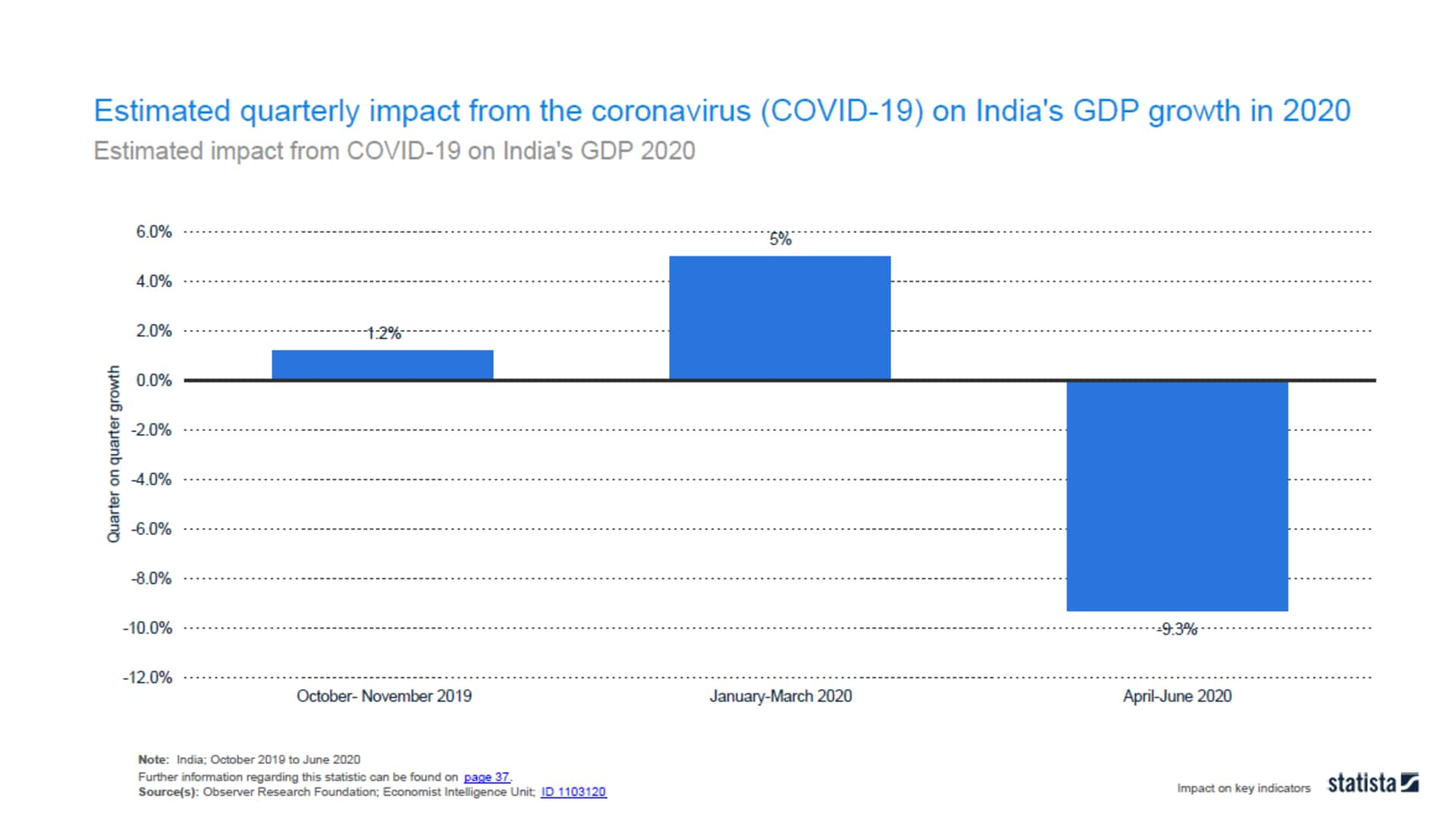
Estimated quarterly impact from the COVID-19 on India’s GDP growth in 2020: India’s quarterly GDP was estimated to a decline of over nine percent between April and June. This was a decrease from a five percent growth in the beginning of 2020. The country, on March 25, went into the largest lockdown in the world, restricting 1.3 billion people. This was extended until May 3. India’s government estimated its financial, real estate and professional services sector to be hardest hit during the period of the lockdown. (Graph: CRISIL)
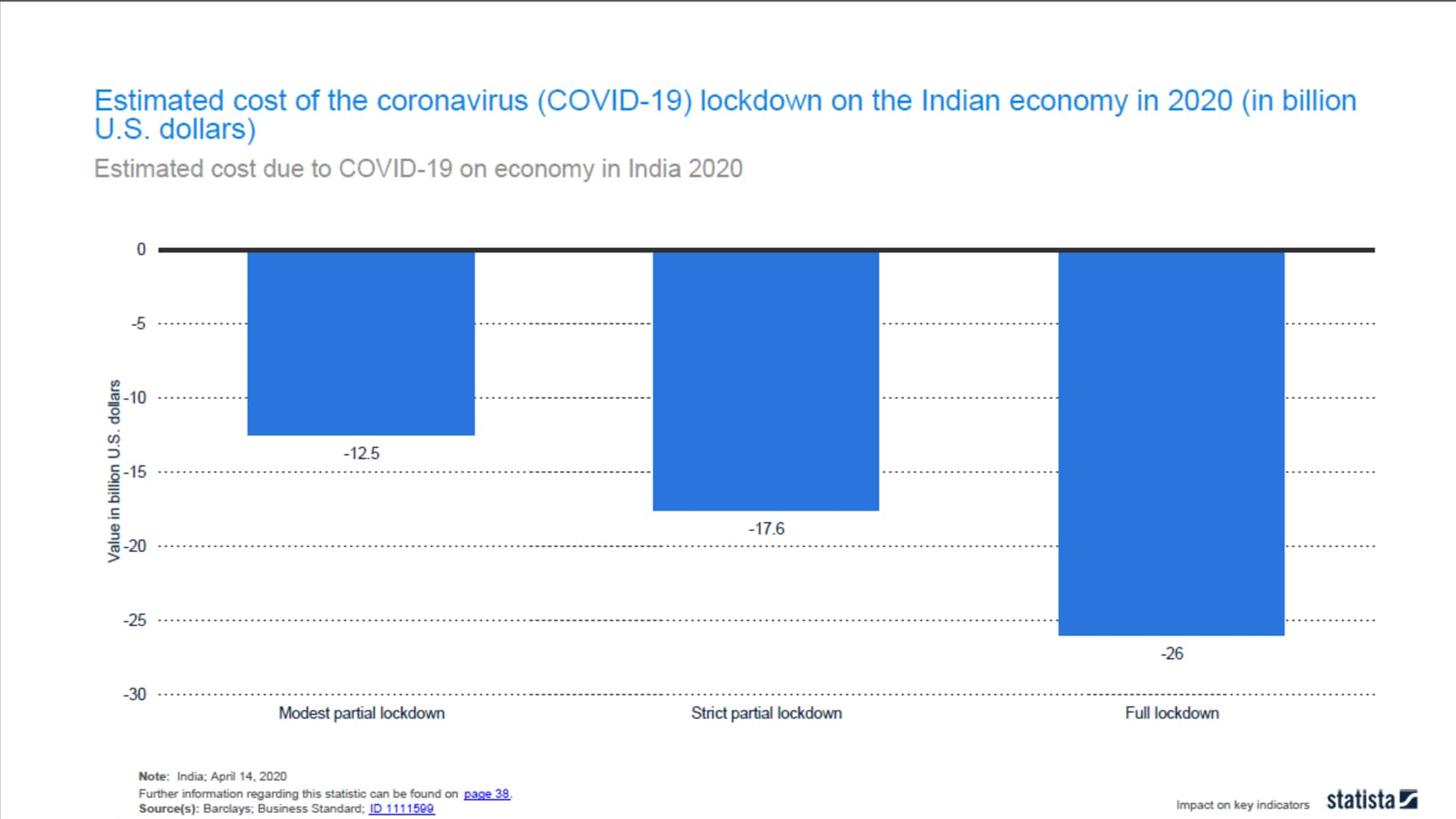
The estimated cost of the coronavirus (COVID-19) lockdown on the Indian economy in 2020 (in billion U.S. dollars): The coronavirus (COVID-19) has been at the centre of the loss of lives and livelihood on a massive scale. In India, the economy alongside the population also requires nursing back to health. The estimated cost of a full lockdown was a whopping $26 billion. Most of the loss was forecast to occur in the June quarter. Setback on the economy the lockdown came at a time when the economy was already struggling. Trade across sectors was estimated to be impacted. This directly affected the procurement of essential items including testing equipment. Besides the import and export business, yet another major revenue generator that received a blow was the tourism industry. India`s predominantly unorganized retail market was yet another casualty with the lockdown increasing the pressure on the online retail segment to rise to the occasion. However, companies offering digital payment services such as Paytm and Google Pay appeared to have somewhat benefited from the situation. Public healthcare in India While the impact on the economy was one thing, lives were at risk, putting healthcare at the forefront. Access to proper healthcare services was a major concern within India irrespective of the pandemic. As of 2018, public health expenditure was valued at nearly 1.6 trillion Indian rupees. Government health facilities were the more affordable option for a majority of the population. Availability of beds in government hospitals was proportionally higher across urban regions as opposed to rural areas. The government has increased and allocated several government and private testing laboratories to combat the virus. (Graph: CRISIL)
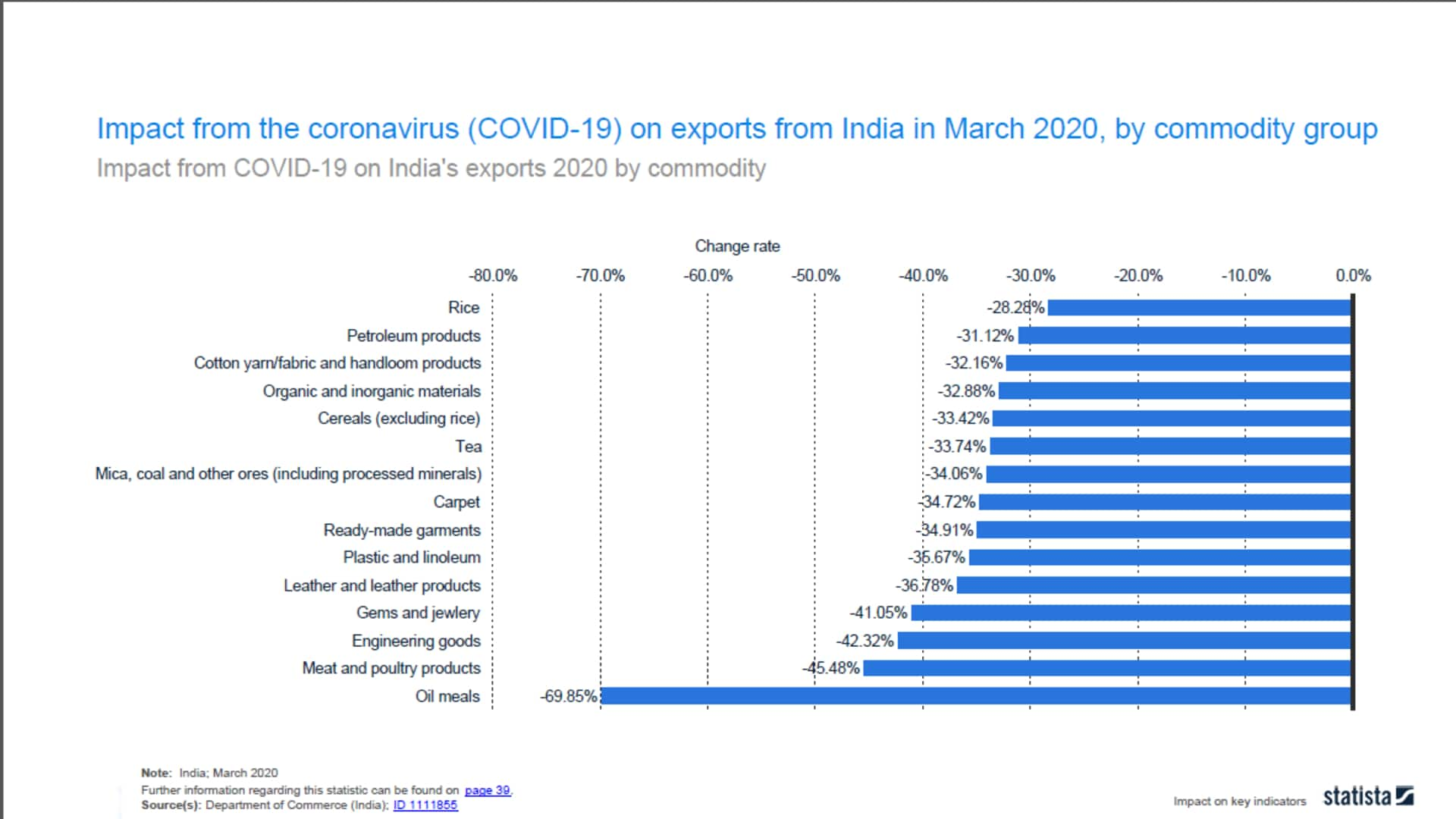
Impact from the coronavirus (COVID-19) on exports from India in March, by commodity group: Tea exports from India was the least affected with a decline of over 33 in March, compared to the same month in the previous year. Engineering goods, meat and poultry products along with oil meals took the steepest hit ranging between losses of 42 and 70 percent that month. (Graph: CRISIL)
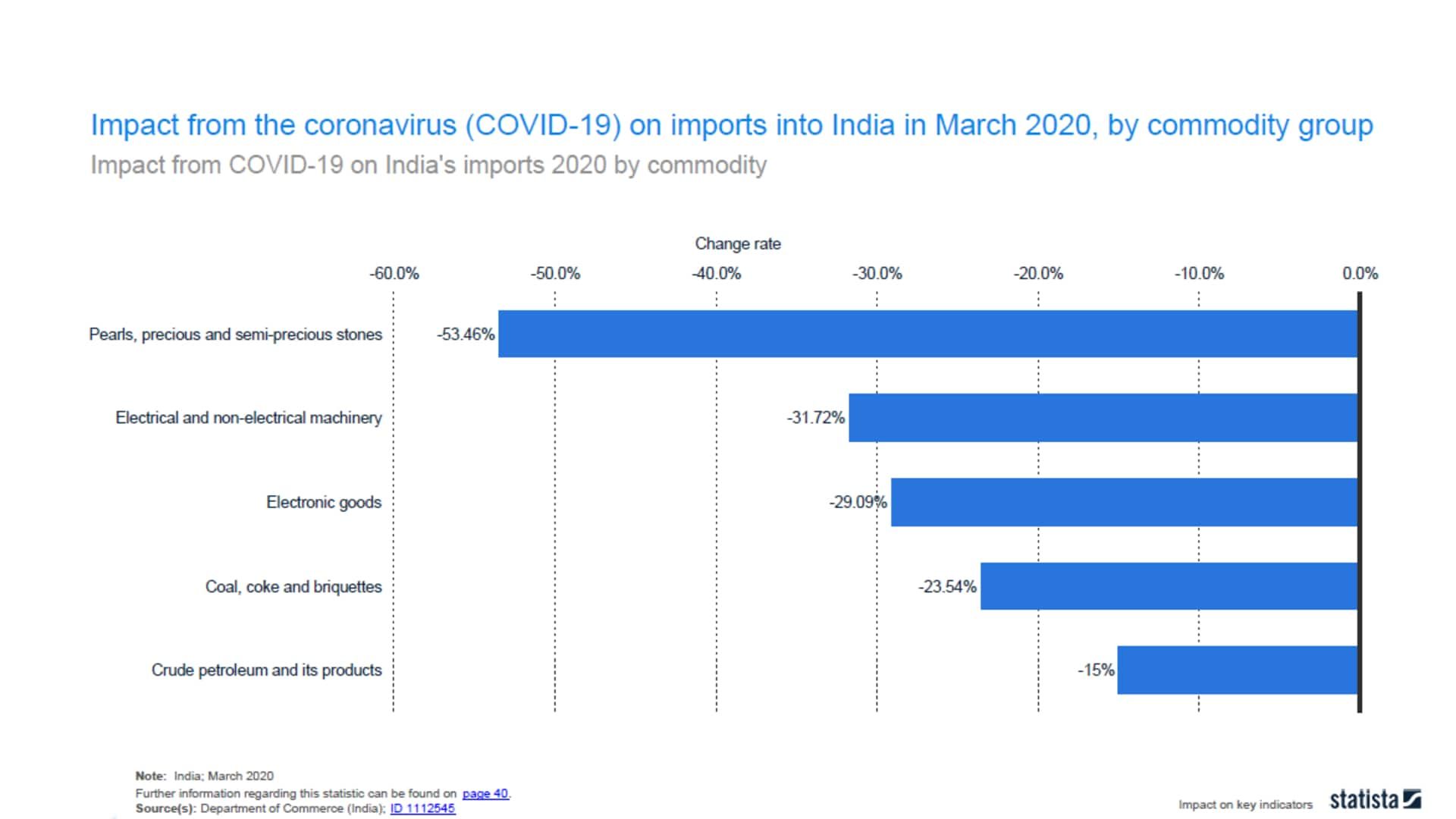
The impact from the COVID-19 on imports into India in March 2020, by commodity group: Crude petroleum and its products into India was the least affected amongst commodities in the country’s import market with a decline of 15 percent in March 2020, compared to the same month in the previous year. Pearls, precious and semi-precious stones, electrical and non-electrical machinery and electronic goods took the steepest hit ranging between losses of 30 and 53 percent that month. (Graph: CRISIL)
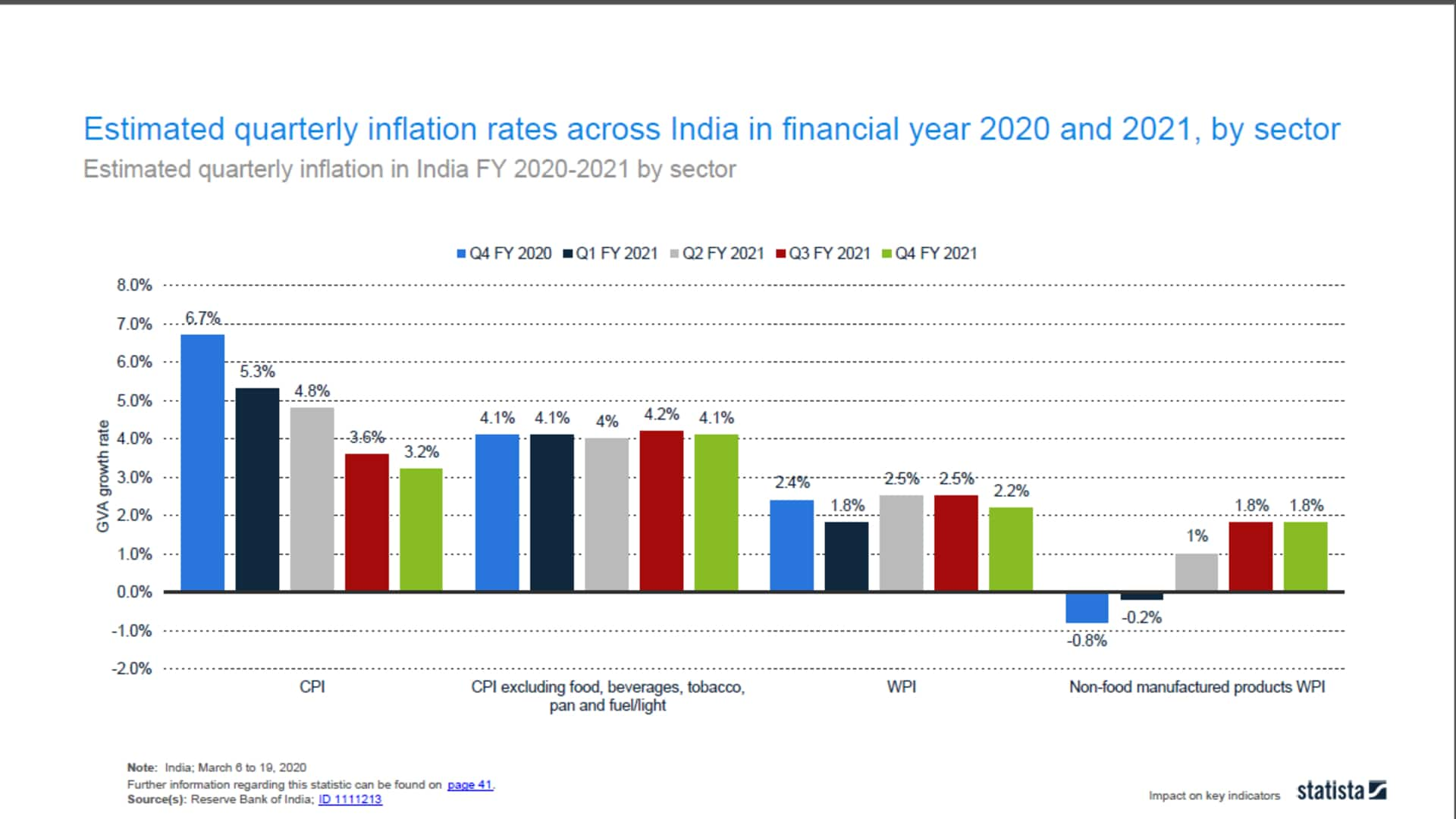
The estimated quarterly inflation rates across India in financial year 2020 and 2021, by sector: Consumer Price Indices were estimated to decline over the quarters of financial year 2021 indicating a period of deflation and a possible decrease in consumer demand. On the other hand, CPI excluding food, beverages, tobacco and fuel/light was projected to be far steadier at around four percent during the same time period. (Graph: CRISIL)
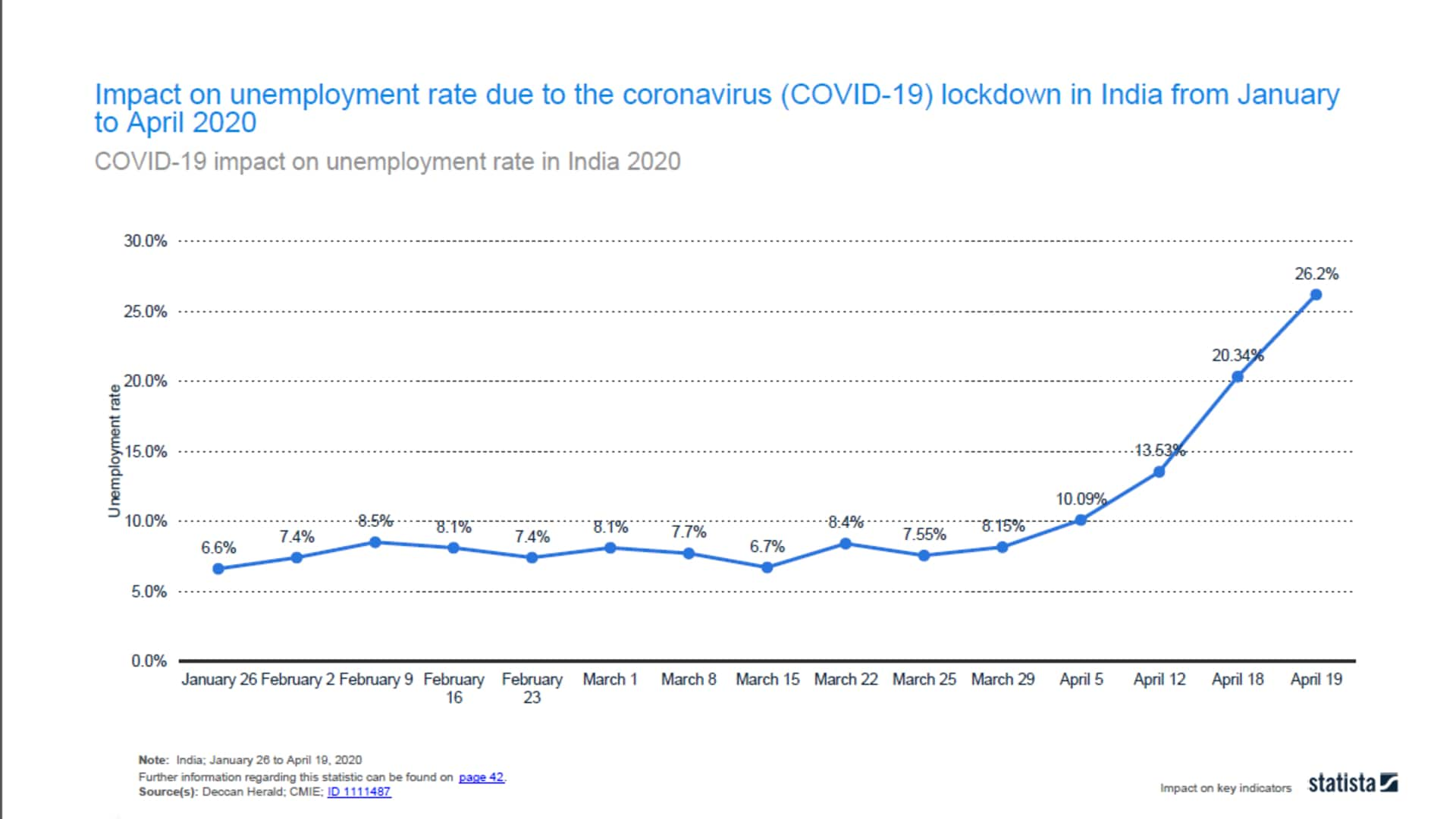
Impact on unemployment rate due to the coronavirus (COVID-19) lockdown in India from January to April 2020: A damaging impact on an economy as large as India`s caused due a total lockdown was imminent. Unemployment went up to 26 percent on April 19, 2020. This was possibly a result of a decrease in demand as well as the disruption of workforce faced by companies. Furthermore, this caused a GVA loss of more than nine percent for the Indian economy that month. The trickle-down effect Between February and April 2020, the share of households that experienced a fall in income shot up to nearly 46 percent. Inflation rates on goods and services including food products and fuel were expected to rise later this year. Social distancing resulted in the job losses, specifically those Indian society`s lower economic strata. Several households terminated domestic help services – essentially an unorganized monthly-paying job. Most Indians spent a large amount of time engaging in household chores themselves, making it the most widely practiced lockdown activity. Aid from the Pradhan Mantri Garib Kalyan Yojana The most devastating impact of the virus and the lockdown had been on the economically backward classes, with limited access to proper healthcare and other resources. This resulted in the government to launch various programs and campaigns to help sustain these households. Under the Pradhan Mantri Garib Kalyan Yojana, 312 billion Indian rupees were accrued and provided to around 331 million beneficiaries that included women, construction workers, farmers, and senior citizens. More aid was announced in mid-May, to mainly support small businesses through the crisis. (Graph: CRISIL)
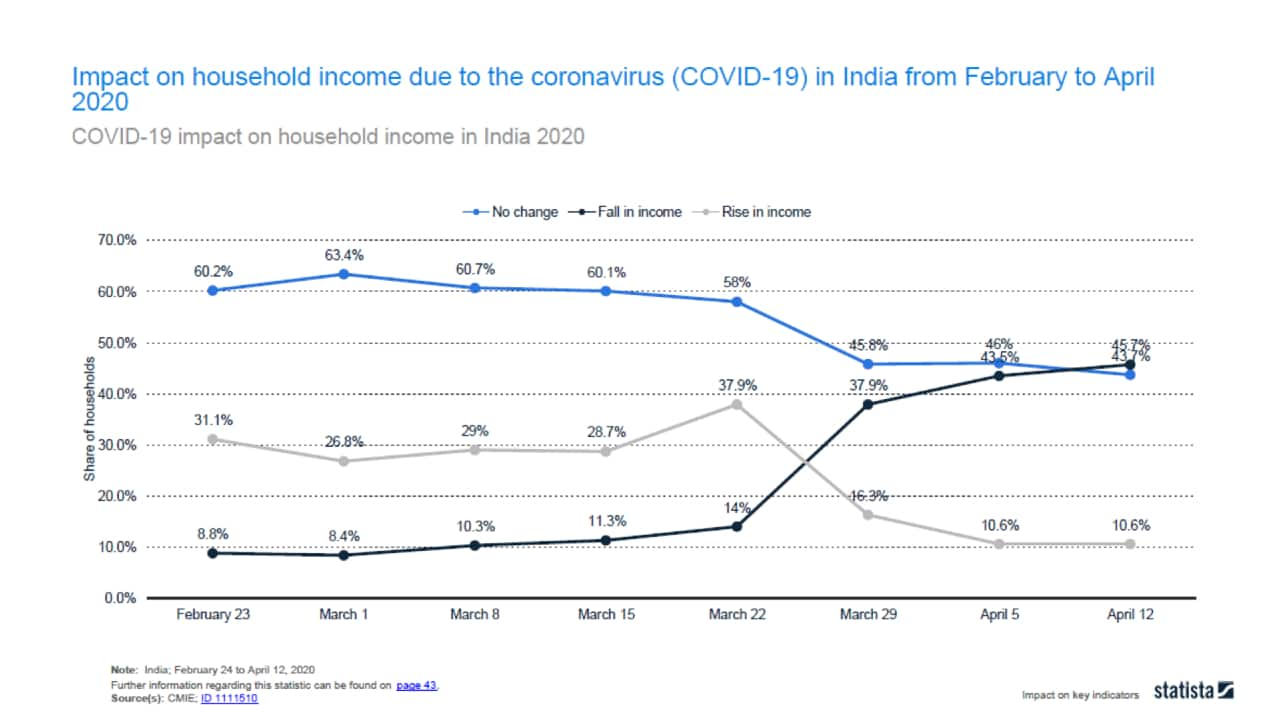
Impact on household income due to the COVID-19 in India from February to April 2020: Household income in India was drastically impacted due to the coronavirus (COVID-19) lockdown as of April 12. There was a significant decrease in the level of income with households reporting a fall in income from about nine percent in late February to a whopping 45.7 percent in mid-April. Rise in income saw a contrasting trend indicating similar results; from 31 percent in late February to 10.6 percent on April 12. (Graph: CRISIL)
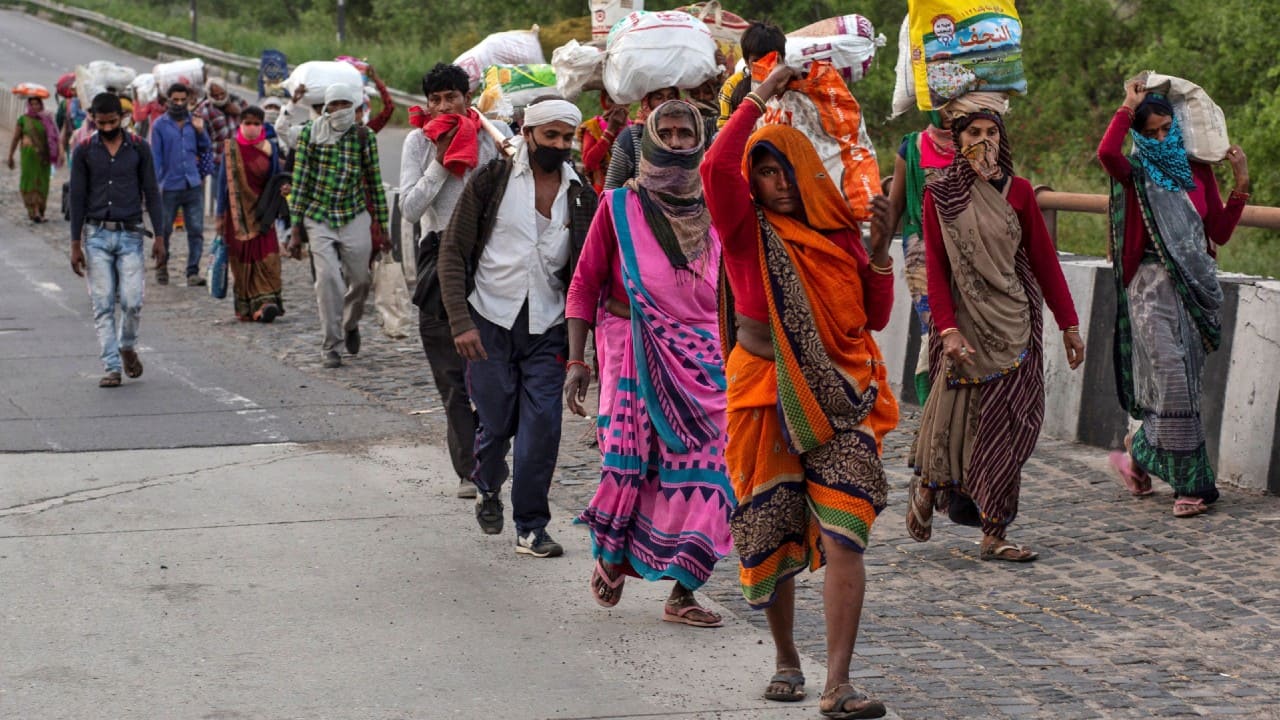
The report highlighted the things that have changed since the ratings agency’s latest forecast on April 28, wherein it had slashed the outlook for India’s FY21 growth from 3.5 percent to 1.8 percent. Among the reasons is the repeated extension of the lockdown in order to tackle the rising cases of COVID-19 across the country, which has in turn led to a curtailing of economic activity, is one among the many. Another reason is the recent Rs 20 lakh crore economic package announced by the Centre, which according to CRISIL, is “without enough muscle”. (Photo Credit: Reuters)
First Published on May 27, 2020 04:06 pm